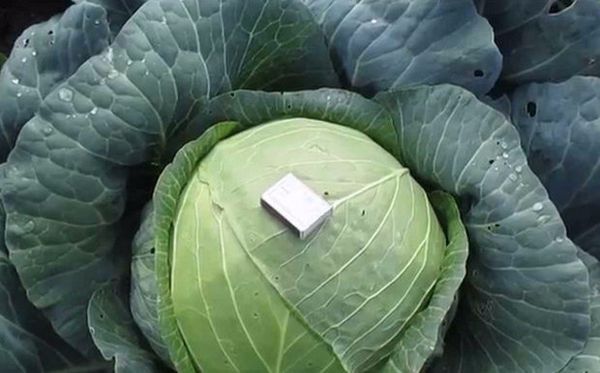White cabbage Megaton F1 found great love among gardeners for its high productivity. The variety is considered to be medium late and demanding to care. When growing Megaton F1 it is necessary to follow all the rules of growing and caring for the crop.
Table of contents
Description and characteristics of cabbage varieties Megaton
The variety was bred by Dutch breeders. In Russia, it became known in the late 90s. Megaton - refers to medium-late varieties and differs from other varieties. increased productivity and productivity.
Sheet rosette in a variety of large and the description has a light green color. Heading dense, flattened shape, reaches in size up to 5-7 kg. With a large size of the head, the stalk of the variety is small.
Yield is 9 kg from 1 square. meters. From the moment of emergence of shoots to technical ripeness, about 160 days pass, depending on climatic conditions and the method of cultivation.

Advantages and disadvantages
The advantages include:
- Frost resistance
- Good yield
- When the air temperature drops, the head does not crack
- High resistance to cabbage diseases
- Megaton is perfect for conservation
- Well transported
Growing up
Grow cabbage Megaton can both seedlings and seeds in open ground.
Seedless way
This method involves planting seeds. directly to the ground, to a permanent place.
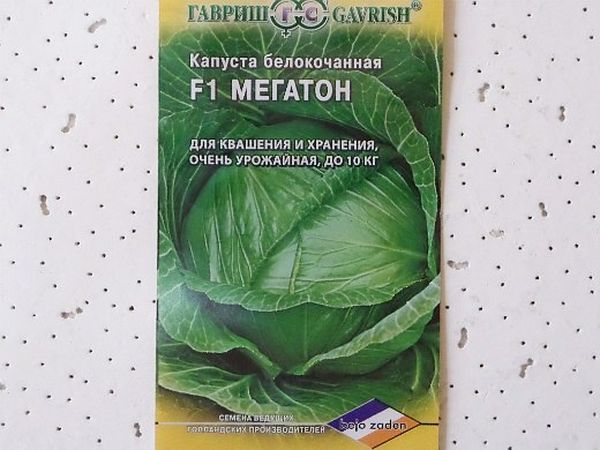
For good germination, seeds are planted in early May, after spring frosts. Before planting, it is necessary to process the seeds:
- Soaking in hot water for 20 minutes
- Sharp immersion in cold water for 5 minutes
- Processing in a weak solution of potassium permanganate, to prevent the occurrence of various diseases
- Washing and drying
Disinfected and treated seeds are planted in depth up to 3 cm, spill and mulch to prevent the occurrence of earthy coma and drying of the soil.
Before the emergence of seedlings should not allow the soil to dry out. Watering is done by sprinkling so that the water does not knock the seeds out of the ground. After the appearance of 3 true leaves, the culture is thinned. The second thinning is carried out after the appearance of 6 true leaves.
After the thinning, the cabbage must be fertilized with nitrogenous fertilizers, weed and soil the soil.
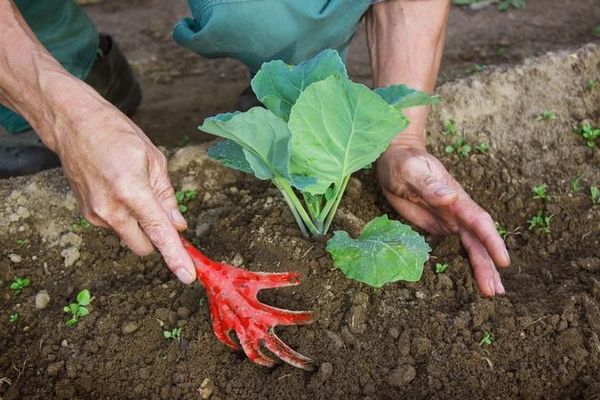
Seedling method
Growing seedlings is necessary in the beginning of April. The prepared seeds are sown in the nutrient soil and set in a micro-pot. You must ensure that the soil was constantly wet, while spraying is carried out using a spray gun.
When 3 sheets appear, the seedlings must be fertilized with complex fertilizers and transplanted into separate pots.
Picks produce, only after careful passage of the plant. Seedlings are carefully removed with a clod of earth and cut the main root by 1/3.
Growth conditions, soil preparation and Megaton landing rules
In very hot weather, young seedlings need pritenyat for 2-3 days.
For a generous harvest, the beds must be prepared in autumn. The beds are dug up on shovels bayonet and organic fertilizers are applied. Cabbage is better to plant on the beds, where previously grew potatoes, carrots or tomatoes.
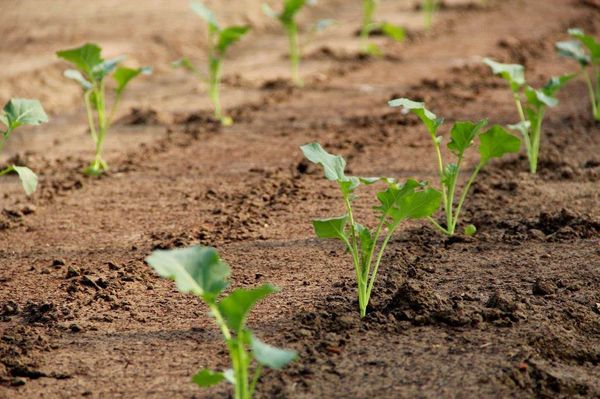
Cabbage, Megaton varieties prefer fertile soil with good moisture and permeability.If the land is with high acidity, then at the time of digging into the soil it is necessary to add ash or lime. On acidic soil, cabbage can get sick with certain diseases that cruciferous plants are susceptible to.
To prevent the attack of insects - pests, marigolds, mint, cilantro and other spicy plants are planted with cabbage.
Grade care after planting
Care Megaton grade is not difficult, is only timely watering, fertilization and hilling.
Watering
Watering cabbage exercise in the morning or evening after drying the top layer of the earth, with extremely warm water.
After watering, the ground around the plant should be gently loosened to a depth of at least 5-7 cm to prevent cracking of the soil.
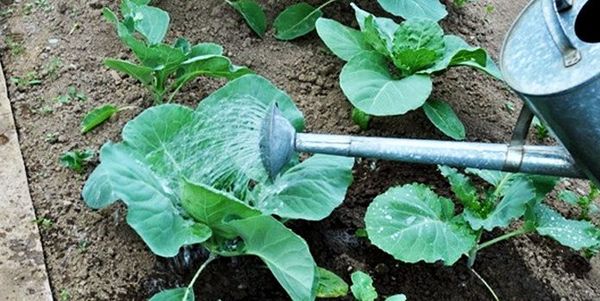
After planting seedlings watering spend every 2-3 days, 10 liters of water per plant. From 3 weeks watering is reduced to 1 time per week. Water consumption per plant is 12 liters. During the period of heading, watering is reduced, and 14 days before harvesting, it is completely stopped, in order to protect the heading from cracking.
Hilling
The first hilling spend after 21 days after planting seedlings. Subsequent hilling - once in 10 days.
Top dressing
During the cultivation of cabbage, fertilizers make three times per season.
- The first feeding: two weeks after transplanting.
- Second: 14 days after the first feeding. To do this, use cow dung diluted with water in the ratio of 1:10.
- Third: during the formation of the head. 10 grams of urea and potassium sulfate are added to a bucket of water.
For the full production of nutrients for each plant, you must use half a liter of fertilizer.
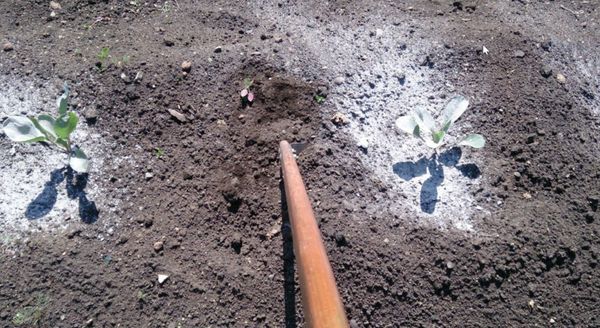
Diseases and pests
Although Megaton cabbage is resistant to many diseases, but with improper care it can hit:
Cabbage Mole
Going on leaf damage, buds and young heads of cabbage caterpillar. For treatment, lepidocytes are used (20 grams per 10 liters of water).
Cabbage Aphid
Leaf bleaching and curling, a slowdown in growth and a disturbance in the formation of a head. The treatment consists in adding Decis Pro to the soil.
White fly
If the cabbage is damaged by whitefly, the formation of white bloom on leavesthat darken over time. You can get rid of it by spraying the plant with Actellik at the rate of: 1 ampoule per liter of water.
Medvedka
Medvedka strikes root system and stems, which leads to the death of the plant. To destroy Medvedki use the drug "Medvetoks", which is introduced into the soil to a depth of 5 cm.
Harvesting and storage
At the time of collection affects the landing method. When sowing seedlessly, the collection is made for 160 day. When planting seedling method - on day 100.
Although Megaton is resistant to a sharp drop in temperature, it has a negative effect on the storage time. Depending on the region, Megaton cabbage varieties are harvested in the fall.
For storage, select intact vegetables, with no signs of rot. Store the heads of stalk up on the straw in a dry room with a temperature of 0 to -4 degrees.
Megaton has one drawback - it’s short fresh storage timeand in order for cabbage to delight itself with its taste throughout the winter, it must be salted.
Under the rules of cultivation and crop care, the Megaton variety will delight not only for its high yield, but also for its wonderful taste.
There is a sign of planting cabbage: you can not sow seeds or plant seedlings at a permanent place on Thursday, as they will eat a flea or caterpillar (sign checked by many gardeners).
